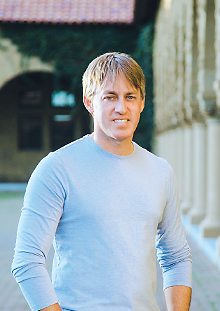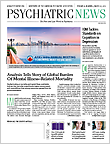“Alone we can do so little, together we can do so much.” —Laura Roberts, M.D., at APA’s 2014 Institute on Psychiatric Services
For decades, the San Francisco Bay Area has been a port of entry for immigrants to the United States from countries on the Pacific Rim. In the late 1970s and throughout the 1980s, in the wake of the Vietnam War, the city and surrounding counties became a magnet for refugees from Vietnam, Cambodia, and other Southeast Asian countries.
Many of these newcomers brought with them a history of trauma related to the war and—especially in the case of Cambodian refugees fleeing the Khmer Rouge—exposure to war crimes, including torture. So it is not surprising that many also exhibited signs of posttraumatic stress disorder (PTSD) and other mental illnesses—although those signs and presenting symptoms may have been unique to the cultures from which they came and different from what psychiatrists may encounter in American patients.
“Cross-cultural psychiatry is about learning how to interpret DSM disorders as they present in people from other cultures speaking other languages,” said Daryn Reicherter, M.D., a clinical associate professor of psychiatry and behavioral sciences at Stanford University School of Medicine.
Though not formally recognized as a subspecialty of psychiatry, it is a niche form of practice that, he said, “takes some extra layer of experience to get good at.”
His interest in cross-cultural psychiatry led Reicherter more than a decade ago to begin working with the immigrant and refugee communities that had grown up in the Bay Area. In addition to work at Stanford community mental health clinics, Reicherter began seeing patients at the Center for Survivors of Torture, a project of Asian Americans for Community Involvement (AACI) in San Jose that serves survivors of trauma from Vietnam and Cambodia. Many of these individuals have now been in the United States for three or more decades, but the center also serves Bosnians, Iraqis, Iranians, and individuals from African conflicts fleeing warfare, persecution, and terror.
“In community mental health settings, psychiatrists are typically hired because they have a skill set for working with public-health systems,” he told Psychiatric News. “But they are not necessarily hired for the niche problems that affect the population being served. I am working in these clinics in our community serving a variety of patients but also working specifically with survivors of trauma and war crimes who are presenting with PTSD, major depression, and related disorders.”
Beyond his skill in interpreting DSM-classified mental disorders through the prism of culture, Reicherter brought another asset to the center—the prestige and imprimatur of Stanford. In time, both parties came to see a synergy of interests and to recognize that a formal partnership between the center and the Stanford Department of Psychiatry would greatly benefit the target population.
“With an attending physician at the clinic, we could make the case for turning it into an educational opportunity for our medical students and residents,” Reicherter said. “So beginning in July last year, we have a resident rotation where our trainees can come to the clinic, do clinical work, and learn about cross-cultural psychiatry. It’s very good for Stanford to have an opportunity like this for learning and very good for our patients. And what better way for the center to expand its mission than by having new generations of doctors-in-training getting hands-on experience with refugee populations? It’s a win-win for everyone.”
The partnership between Stanford and AACI is an example, Reicherter said, of the kind of synergy that can be created when academic departments of psychiatry work with community-based organizations to solve problems that might overwhelm either party alone.
Laura Roberts, M.D., chair of the Department of Psychiatry and Behavioral Sciences at Stanford, who has championed Reicherter’s work in the community, said that partnering between academic and community organizations allows for new approaches to issues that each partner cannot resolve alone. “Communities can help academic programs focus their efforts on questions of greatest importance to health and well-being,” she told Psychiatric News. “Academic programs can help communities invent and implement new resources to address health concerns.
“Academic programs also can help determine what works and what does not, so that resources may be engaged more effectively in improving health outcomes—and often what is learned can be shared with other communities elsewhere,” she said.
At the 2014 Institute on Psychiatric Services in San Francisco, Roberts spoke about academic-community partnerships in the symposium “Alone We Can Do So Little, Together We Can Do So Much.” She described other collaborative projects at Stanford, in addition to the partnership with AACI, as well as ongoing projects at other institutions.
These partnerships, however beneficial to both partners, do not happen without effort. What are the barriers to success?
“Community-academic collaborations are very valuable and often accomplish far more than what is originally hoped for, but building a healthy partnership requires immense time and effort,” Roberts said. “The best partnerships will be based in a sustained and deep dialogue characterized by shared optimism, trust, predictability, and clarity.”
Reicherter agreed. “I think one of the biggest obstacles is lack of patience,” he said “This project at AACI wasn’t built in a day but was the product of years of working together, of evolving to the point where we were ready for a partnership. It’s a matter of finding the right fit.”
Roberts and Reicherter are among co-editors of a book on academic-community partnerships that will be published later this year.
He added that “buy-in” by leadership at the institution is crucial, and he said Roberts’ championing of his work has been vital to its success.
Ultimately, Roberts said, outreach to the community is central to the mission of academic medicine. “Academic medicine is entrusted with serving all people across society by generating new knowledge, by translating what is learned into improved health for individuals and communities, by training clinicians and scientists, and by collaborating with stakeholders to address issues of greatest importance to human health,” she said. “Every day academic medical centers serve the people living in their local communities, providing state-of-the-art clinical care and often giving patients the opportunity to access highly innovative treatments not available elsewhere.” ■

